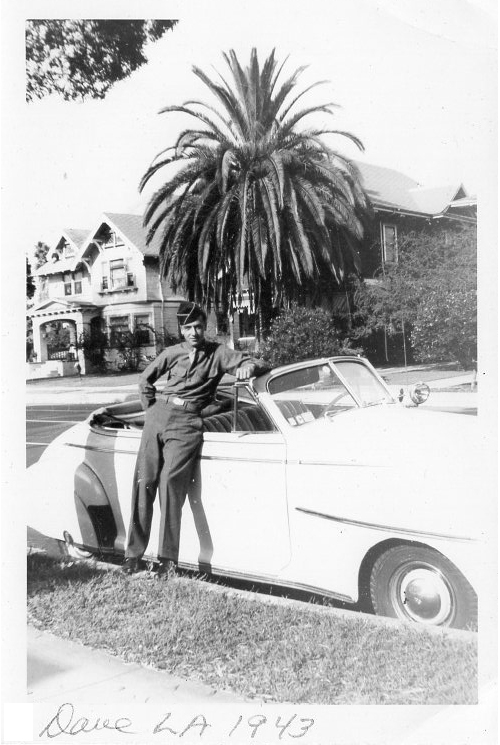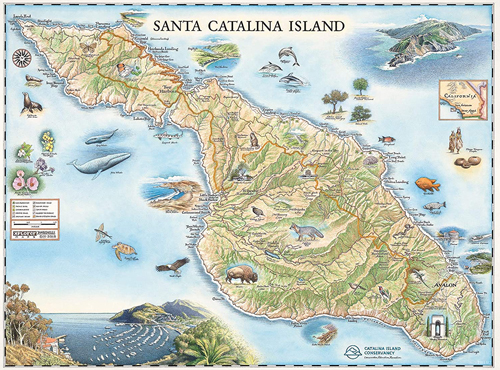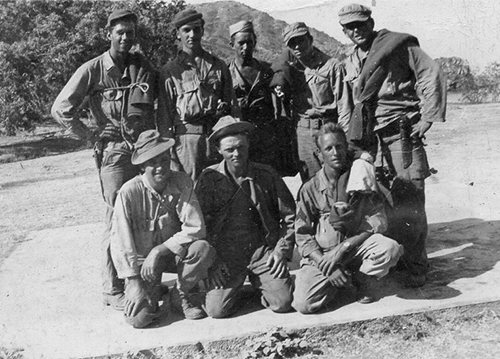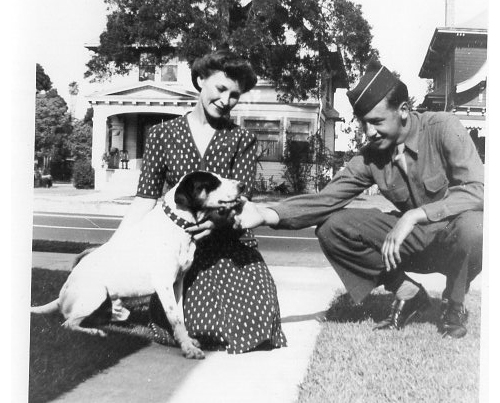Part 1 | 2 | 3 | 4 | 5 | 6 | 7 | 8 | 9 | 10 | 11 | 12 | 13 | 14 | 15 | 16 | 17 | 18 | 19 | 20 | 21 | 22 | 23 | 24 | 25
During the 1990s, a few years before my father, Dave, passed away in December of 2000, he wrote a 35-page autobiography. Excerpts from it will be published here, as companions to the diaries my mother, Dorothy, kept in 1945 and 1946—the year she met Dave. My dad was born in 1927, in Hamilton, Ohio. The family eventually moved to the south side of Chicago.
Part 13
Infiltration
With our training at the Congressional Country Club in Washington, D.C. now completed, and the potentially disqualifying fact that I was just 16 years old behind me, it was time to move on. The art of infiltration would be next on the Office of Strategic Services (OSS) agenda.
Along with two other recruits, we were given civilian clothes, money, and instructed to travel to Baltimore by whatever method we chose. Two of us, including me, chose the bus. The third man went by train. Once in Baltimore, we were to enter the US Treasury headquarters and search for, and acquire, a certain letterhead.
We scouted the building in the early morning hours, then went in. Security was light. Other than passing by two guards in the lobby, we were free to roam around the hallways, and to look for open offices.
A man approached me. “What are you looking for?,” he inquired. I answered that I had been searching for a particular room and had gotten lost. That seemed to satisfy him. Soon after we found an office, inside which was a desk strewn with important-looking papers, all having the required letterhead. We took all of them, plus a rubber stamp that said "Treasury of the United States,” and walked out of the building, our mission accomplished.

Visiting Los Angeles, in uniform, 1943
Having missed an assignment with the ill-fated JEDs due to sickness, I was next shipping off to Riverside, California, having been placed into a group known as Arakan Detachment 202. Once there, I was able to obtain passes to Los Angeles, just 50 miles away. My brother Oregon, who I had not seen since I enlisted, was now living there with his wife, Florence, and I was able to spend some time with them.
Very soon after returning to Riverside, our 12-man Arakan group was put on a boat to Catalina Island for a month-long stay. There, we were trained in how to handle a rubber boat, underwater demolition, beach infiltration, and survival skills.

Santa Catalina Island. The town of Avalon is at lower right.

The Arakan group on Catalina, 1943. Dave is standing, second from left.)
One of our exercises was to be sent out in small, three- to-five-man groups for three days. The only items we were allowed to carry: a knife, matches, string, and assorted fish hooks. No food, shelter, extra clothing, or weapons permitted. Once outside of Catalina's resort town of Avalon, the island was fairly rugged and remote, aside from William Wrigley's home, an airstrip on the north portion, and a Coast Guard shanty in what was called the “pinched waist” section.
My group was given an area to work in towards the north part of the island. During our briefing, we'd been advised that the Wrigley mansion was off-limits, and also that the Coast Guard station was staffed by two radio-monitoring personnel.
On the first night out, we reconed the station, and then proceeded to hit it at dawn the next morning. We informed the Guardsmen that they were our captives and that it entitled us to take whatever we wished. And at the top of our wish list: food. In fact, we had trouble eating all of what was in the Coast Guard's pantry over the following two days of our occupation. We later were told that a formal protest had been lodged regarding our “attack.”
The majority of our Catalina Island training took place in water or on the beach. About every other night, we were rousted out of bed at 4 or 5am, and ordered to board assault boats, row out to sea, and then infiltrate the beach defenses. As it was still late spring, the ocean was quite cold, and the sand quite abrasive. The whole thing quite miserable.
One evening, after sunset, a buddy of mine, Art, and I were gazing at the lights of Long Beach in the distance, roughly 20 miles across the channel, when an idea struck us. Let's try and see if we can get there on surfboards.
We set out on a Saturday evening just after dark, intending to return for Monday morning's roll call. Wearing civilian clothes for our journey, we stowed our uniforms inside waterproof bags which we secured to the surfboards. Eight hours later, we had surfed the 20 miles. However, the current had carried us to the south, and away from our destination. We were drifting by that time, but luckily we were spotted by a fishing boat. The fishermen delivered the two of us and our seagoing surfboards to Avalon. From there, we got a ride on the early morning LST boat, back to camp.
Not a word was said by anyone about our escapade. My guess is that the OSS valued a bit of ingenuity and, perhaps, recklessness, too. In any case, our group was next destined for Camp Pendleton, the Marine base near San Diego and, from there, someplace halfway around the world, and a long way from the streets of Chicago.

With his sister-in-law Florence, in Los Angeles, 1943
* * *
End of Part 13
Part 1 | 2 | 3 | 4 | 5 | 6 | 7 | 8 | 9 | 10 | 11 | 12 | 13 | 14 | 15 | 16 | 17 | 18 | 19 | 20 | 21 | 22 | 23 | 24 | 25
|

